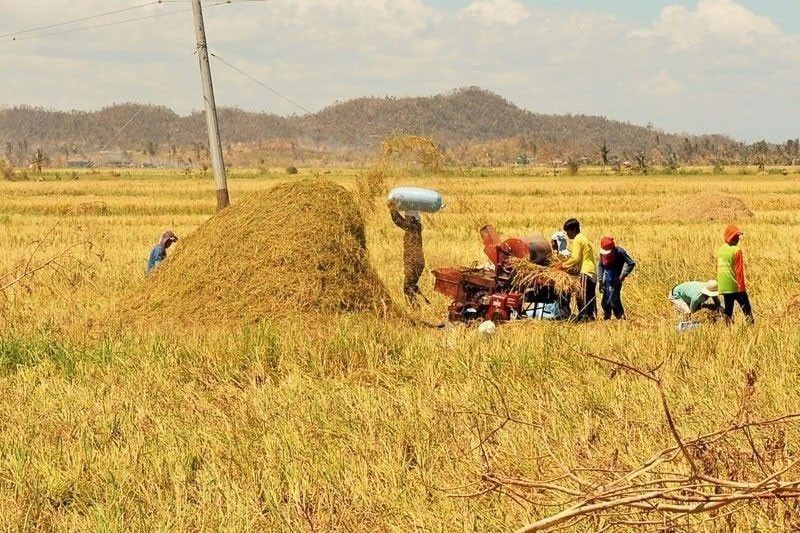DA projects improved palay harvest this year

MANILA, Philippines — The Department of Agriculture (DA) expects to harvest a record 20.4 million metric tons of unhusked rice (palay) this year, thanks to the continued implementation of the Rice Tariffication Law (RTL).
In a statement, Agriculture Secretary William Dar said the country’s rice sector is gradually realizing the potential of the RTL as both palay production and farmgate prices have increased this dry season. This has resulted in more affordable rice for consumers amid the pandemic.
For the current dry season, the DA, through its Philippine Integrated Rice Program (PIRP), expects palay production to reach 10 million MT, which is expected to extend to the next main cropping or wet season as farmers are encouraged by the higher farmgate prices.
DA-PIRP director Dionisio Alvindia said they expect the palay sector to continue its positive growth this year despite the community lockdowns due to the COVID-19 pandemic.
“The higher prices of palay at farmgate provide more incentives for our farmers to continue planting,” Alvindia said.
Alvindia said that as of April 15, Nueva Ecija farmers were selling their freshly-harvested palay at P16 to P18 per kilo, and dried palay at P20 to P22 per kilo.
Estimates from the Philippine Statistics Authority (PSA) show that palay production likely rose to 4.57 million MT from 4.26 million MT in the same period last year.
The figure, however, is 0.3 percent lower than the PSA’s initial production forecast of 4.58 million MT for the first quarter.
Harvest area likely increased by 4.6 percent from 1.098 million hectares, while yield per hectare likely grew to 3.98 MT from 3.88 MT.
About 527,310 hectares or 49.8 percent of the updated standing crop had been harvested and 790,730 MT or 85 percent of the perceived area had been actually planted.
Of the total area of standing palay to be harvested for the second quarter of 2021, 24.2 percent was at vegetative stage, 38.4 percent at reproductive stage and 37.4 percent at maturing stage.
Alvindia said that at least two million hectares of land were planted to rice during the dry cropping season, with farmers producing an average of five MT per hectare or roughly one ton more than the national average.
Dar attributed the improved palay output to the RTL, which he described as a transformative, but disruptive policy reform.
“While we have anticipated transition to take time, the benefits that it brings to both consumers and palay farmers during this time of crisis cannot be denied,”Dar said.
“Despite the pandemic, we are slowly, but surely hurdling the challenges in the implementation of RTL, with tangible results in terms of palay productivity, farmgate price, and retail prices of rice,” he said.
Dar said rice is no longer the traditional driver of inflation.
“In fact, the stable supply of rice under the RTL regime has helped temper food inflation in the past several months, which continues to experience upward pressure from the tight supply of meat,” he said.
To ensure higher productivity in the succeeding seasons, Alvindia said the DA would continuously work with farmers’ groups, local government units (LGUs) and industry stakeholders in the efficient and prompt distribution of hybrid and inbred seeds, provision of fertilizers, farm machinery and equipment, other production inputs, credit, and training and extension — all under the Rice Competitiveness Enhancement Fund (RCEF), rice resiliency, and national rice programs.
The DA official reported that as of March 28, the RCEF program was able to deliver 9,236 machineries and equipment to 3,180 farmers’ cooperatives and associations (FCAs) and distributed 1.65 million bags of certified seeds distributed to 661,567 farmers.
In terms of the program’s credit component, Alvindia said P2 billion had been loaned to 5,956 farmers, and 97 FCAs where 7,317 of its members are sub-borrowers.
- Latest
- Trending






























